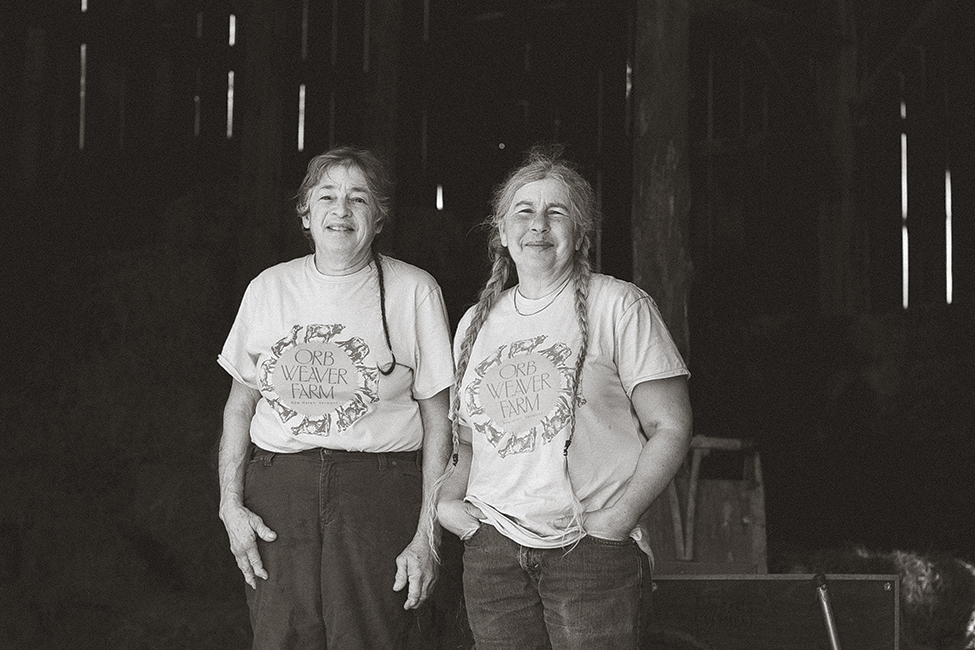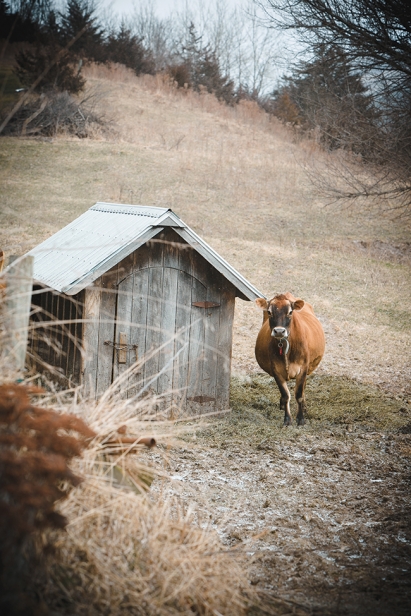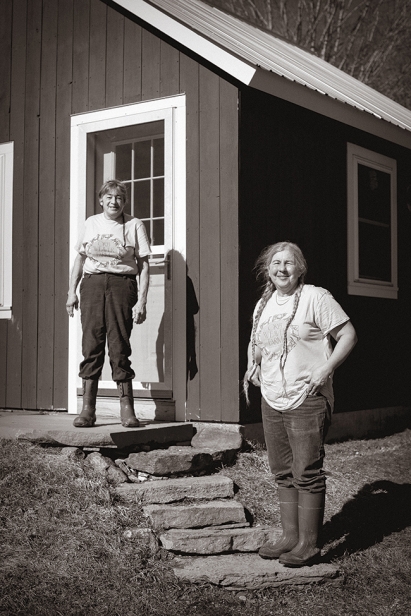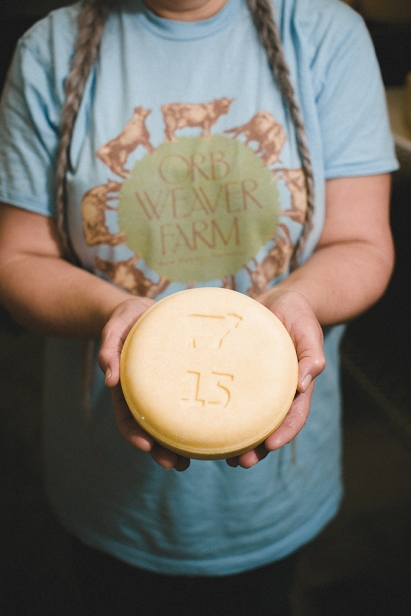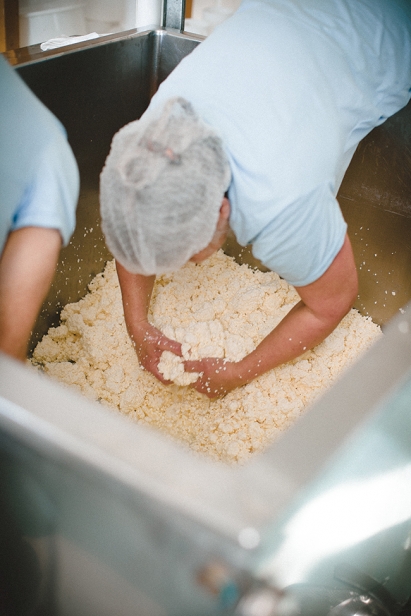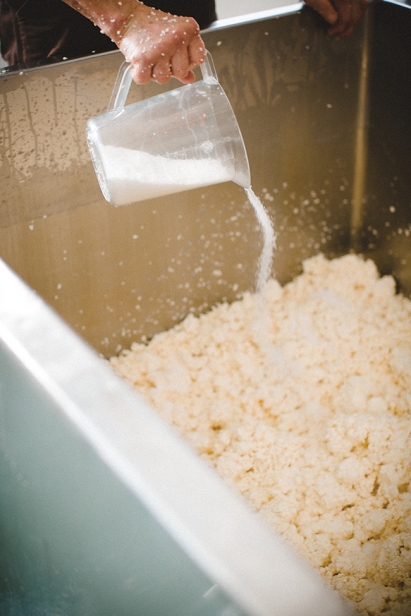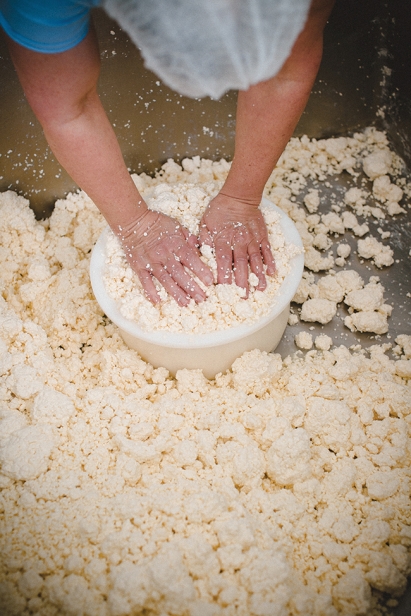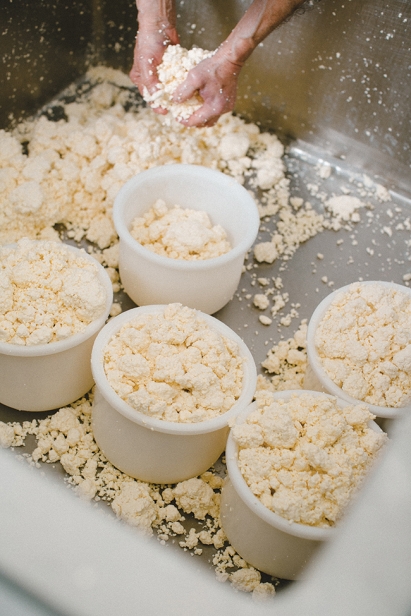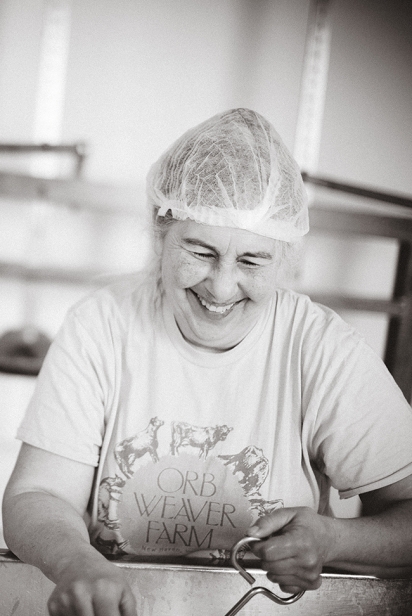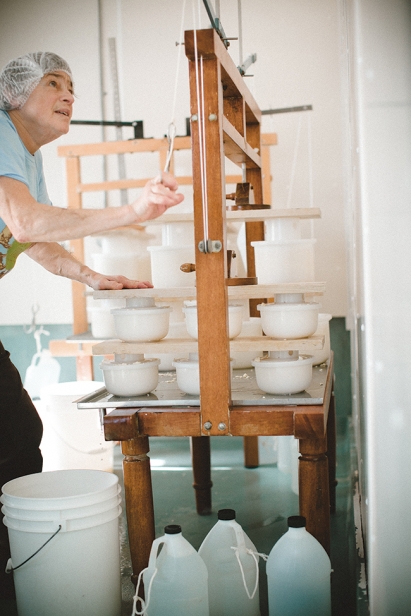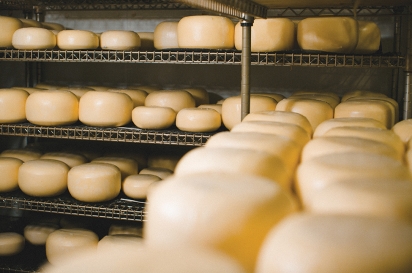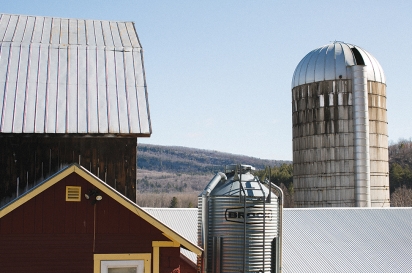Marjorie Susman and Marian Pollack, Orb Weaver Farm
It was almost a sense of awe that affected us as we pulled into the short driveway beside the classic late-18th-century farmhouse with its painted yellow clapboards and blue trim, the home of Marjorie Susman and Marian Pollack. The immaculate farmyard, the pristine barns and cheesemaking outbuildings, the hoop greenhouse, the long vista across winter-pale fields, a hundred acres of Addison County farmland.
Granted, Marjorie Susman and Marian Pollack, the farmers responsible for this agrarian paradise, have had 35 years to tweak and perfect their farm, but as many of us know, farming life isn’t usually neat and tidy. It’s mostly messy. In fact “chaos” is sometimes the word that comes to mind when looking over a typical Vermont farm, because farming life isn’t easy. It means waking up every day and dealing with the problems of that specific day—first the weather, then the health and well-being of the animals and then the upkeep of the fields and orchards.
Marjorie and Marian, on first glance, seem to display an executive level of expertise with ease. Beyond raising their herd of 14 Jersey cows for milk and cultivating a mix of vegetables and fruit for the local market place, it is the cheesemaking that has put these two ardent farmers on the artisanal cheesemaking map. In fact, they are the first artisanal cheesemakers in Vermont, producing their first batch of farmhouse cheese in 1982, a year after they came to farm in Addison County. You could say they started the trend that now claims 43 producers of artisanal cheese.
It is a farming partnership, a business partnership and a personal partnership that has passed the test of time. Marjorie met Marian at an ERA (Equal Rights Amendment) meeting in Greenfield, Massachusetts, in 1976. “It was love at first sight,” Marjorie remembers, and so was seeing Marian’s home situated on a dirt road surrounded by fruit trees and a vegetable garden. Marjorie was a student at Greenfield Community College and Marian was a family therapist. Neither had ever farmed before, but the experience of gardening enticed them to seek out a bigger agricultural venture.
The Vermont border was only a stone’s throw away, and what they saw and heard was going on in Vermont inspired them to join the tail end of a remarkable moment in Vermont agricultural history—the “Back to the Land” movement.
Orb Weaver Farm began as a temporary solution to Marjorie and Marian’s desire to be farmers. The farm itself was only 30 acres of a much larger tract that they were hired to manage as tenant farmers. The two young women answered an ad on Valentine’s Day in 1981. Jim and Margaret Morse of Mad Maggie Farm in New Haven were looking for farmhands. By early March, the two women had moved into the almost unlivable house, and within a year, they had bought the property with a grant from the Lotta Crabtree Trust, an organization they had come to know during Marjorie’s one-year stint studying animal science at the Stockbridge School of Agriculture at University of Massachusetts. Restoration of the farmhouse began right away, and they coexisted with workmen for years, moving from room to room as the building progressed.
Grazing cows and the large hillside vegetable garden grace the view with a backdrop of the Green Mountains. Everything is well cared for here. If the cows aren’t grazing in the back pasture, they are listening to classical music in the barn. Fifteen generations of cows have been born on this farm, each one named by Marjorie and Marian. Some of the names of the present day herd of 14 include Wizard, Timothy, Hershey, Ubu, Foxie, Bosco, Yoohoo and calves Yoyo, Frolic, Prancer and Orbit.
Cheesemaking takes place on Mondays and Thursdays with a systematic process that produces “farmhouse cheese,” named when farmers use milk exclusively from their own cows for the process. Orb Weaver Farm makes rich, raw-milk cheese with a slightly tangy, full-bodied flavor and creates both waxed and cave-aged cheese. In 2000, this hardworking team took a new step into an age-old tradition and began making cave-aged cheese. The cave, built into the hillside using stones from the neighboring town of Panton, has a medieval rounded red door with an old-fashioned latch.
Inside, the atmosphere replicates the aging process used for centuries before refrigeration, with wheels of cheese stacked neatly on shelves at various stages of aging. Cave conditions are warmer and more humid than those in the cheese house. Cave-aged cheese is turned and brushed every other day for several months to create a natural rind. As a result of this care, a robust and complex array of nutty, earthy flavors and a firm, slightly drier texture make cave-aged cheese a true delicacy.
During our lunch in their charming farmhouse, with colorful dried flowers hanging from wooden beams and an expansive screen porch looking out at the rocky top of Camel’s Hump, we got a good taste of the seasonal produce now stored in their root cellar. After years of nonstop work, Marian and Marjorie decided to make cheese for six months and then tend the garden during summer and fall, while allowing the cows to rotationally graze. This new system offers some time to relax and enjoy each other. We could imagine them sipping a cup of iced tea during the summer months while taking a short break from weeding or harvesting in their gardens.
Marian and Marjorie grow and produce around 85% of their food, which includes growing all of their vegetables and making all their dairy products. We enjoyed corn chowder, homemade bread and butter, tomato tapenade and, of course, cheese. All delicious, and a lunch that we savored during lively conversation learning how these two remarkable woman have made their dream come true with passion, love and a lot of hard work.
Perhaps Marian and Marjorie sum it up best: “The seasons dictate our chores for the day, but the rhythm of the seasons is blissfully the same, year after year, as it has always been for those who work the land. The life of a farmer is both simple and vastly complex, dependent not only on planning and muscle but also what falls from the sky and what pushes up from the earth. This is Orb Weaver Farm, the farm we have built for over 30 years, our small piece of the beautiful Vermont earth.”
After their visit to Orb Weaver Farm, Laurie and Bronwyn dreamed of the farming life but soon realized their true forte is writing about it—not living it.


